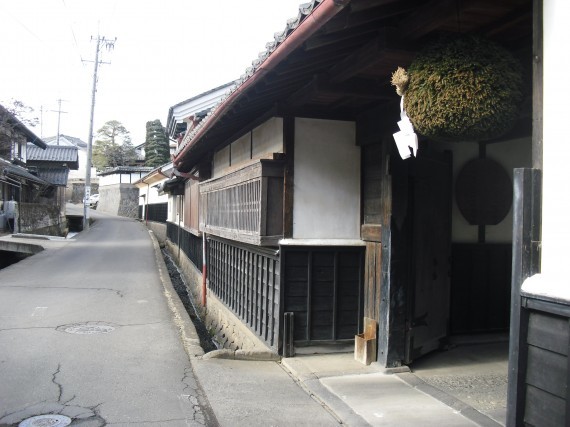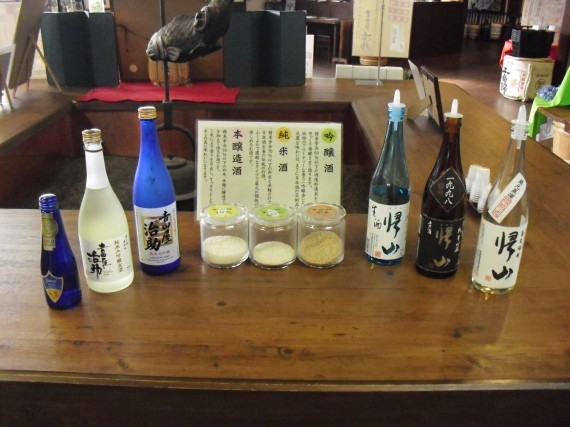The Sake Breweries of the Higashi Nakasendo
The Higashi Nakasendo runs from the highlands of Tateshina to Karuizawa, passing rural towns and ancient sake breweries at the foot of Mt. Asama.
Update:2020/01/17

After cutting through the forest valley of Kiso, circling lake Suwa and passing through the towns of Nagawa and Wada, the Nakasendo continues into Eastern Nagano. The land here is open and the skies are always clear. In the distance beyond miles of farmland and rice paddies, travelers can look upon snow-capped Mt. Asama, one of Nagano’s two active volcanoes.
Original inns and buildings from Edo period remain intact along the road, including a number of sake breweries. There are thirteen sake breweries, or “Sakagura,” in the Saku area of Eastern Nagano, and many of them are near or on the Nakasendo trail. At some of these breweries you can tour the facilities and try the sake for free, so I decided to take a closer look.
Learn More about the Nakasendo
Tsumago-juku and the Nakasendo Road Hike
Walk the Samurai Trail to Narai of a Thousand Houses
The Nakasendo: From Tsumago to Magome
Tateshina’s Ashida-juku

Tateshina-machi is home to Ashida-juku, the 26th post town of the Nakasendo. It lies to the west of Kasatori toge, a steep pass with an exceptional view of the surrounding farmland and mountains. Many travelers rested here after climbing it on their way to Edo.
A number of buildings remain that showcase the traditional architecture of the period. Many inns line the road through Tateshina-machi, and you can peek inside some of the courtyards’ traditional gardens. There are also plenty of lanterns and street signs to point you in the right direction. And there are plenty of bathrooms too!
Motai Ainoshuku

After a short walk from Ashida-juku, you turn left into Motai Ainoshuku. It isn’t a post town itself, but prospered when neighboring post towns became busy and travelers needed other places to rest. There are no lodges or restaurants here, but there are two sake breweries that have been in business for several hundred years.

A ball of pine hangs in the entrance to the Osawa brewery complex, a traditional decoration for sake-serving establishments. Past the entranceway is a large courtyard littered with old and strange machines. There wasn’t a soul in sight when I arrived, but shortly someone came out to show me around.
Our first stop was the storefront where they sell their sake and other beverages. On the counter they have a variety of tasting sake that you can try for free. I spent awhile there appreciating the range of sake in front of me. Of their selection, my favorite was probably their Kataribe brand.
Next, we moved on and visited the brewery’s art gallery—a separate building on the premises full of ink and oil paintings. It was made to house the works of the owner’s grandfather and includes paintings by many other artists of his school.
In another part of the brewery there are several collections of traditional Japanese calligraphy and a museum, which displays all manner of things the brewery has collected since it opened in 1689.

Down the street on a similarly large plot is the Takeshige Honke brewery. They have been operating since 1868. There aren’t any facilities open to the public, but they do sell their products in-house. Their main brand of sake is called Bokusui and comes in a variety of grades from Honjozo to Daiginjo. You can see their range of products in a glass display that features some intricate statues showcasing the sake-brewing process.
The owner was out when I visited so I wasn’t able to take a closer look, but if you’re lucky he might show you around.
Mochizuki-juku

The next stop is Mochizuki-juku, a post town known both for its horses and its calligraphy. Many of its Edo-era buildings remain intact and many new buildings have been modeled in similar styles, like the strange-yet-beautiful city center in the background of the photo above.
The main inn has been converted into a museum and includes artifacts from the Showa, Edo and Jomon periods. Another museum down the road displays famous works of local calligraphy.
There are also many restaurants in town, and most offer Miso Katsudon as a Mochizuki specialty. It’s a fried pork cutlet slathered in miso sauce. Mine was served in a heated stone bowl like a Korean bibimbap. It was just what I needed after trying so much sake with so many hours of walking left to go.

Yawata and Shionada-juku

After Mochizuki-juku, the walk becomes arduous. The trail climbs several hills and follows some major roads. They are quite large, and there are plenty of loud trucks speeding down them. Relics of the Nakasendo dot the path: a Dosojin statue in the grass or a stone monument on the side of the road. They are few and far between, but Mt. Asama is in constant, clear view.
There are two other post towns on the way back to Saku: Yawata and Shionada-juku. Japanese history buffs may appreciate walking through them both, but the journey is long and the towns are far apart. Some highlights of the area include Yawata-jinja, Yawata-juku’s Shinto shrine, as well as the views from the bridge of Shionada-juku. Some people may also be interested in seeing Shionanada-juku’s inns, which are rare examples of three story Edo-period buildings.

Chikuma Nishiki
It takes another long hour of walking to reach Saku city. I continued on the trail until I appeared at the next post town, Iwamurada-juku, before taking a bus back to the station.

From the station, the Chikuma Nishiki brewery is only a 12-minute walk. It is Saku’s largest brewery and has a full store front with a wide selection of sake and shochu to taste. Tours are also available for those interested in how sake is made.

You can find a number of rare sake here, including namazake (unpasteurized sake), natural sparkling sake and some experimental varieties. The namazake was exceptional, with a flavor and aroma I had never experienced before, and my guide told me that it’s a favorite among foreign visitors here. Because it’s unpasteurized it’s only sold in select stores, so you should stop by to try it!
More Information
There some beautiful views along the Nakasendo from Tateshina to Saku city, if you know where to walk. The area between Tateshina and Mochizuki is enjoyable, and you definitely shouldn’t miss Motai Ainoshuku if you’re in the area. There are plenty of restaurants and things to do in Mochizuki when you’re tired and waiting for the bus back to Saku, or to make a quick stop in Yawata or Shionada.
The timetable for the Nakasendo line bus can be found here. It can be boarded from the Saku-daira shinkansen station.
Visiting local sake breweries is a great way to learn more about sake and how it’s made. Check this website for more information on the brewing process, and click here for information about Nagano’s breweries and brewery tours.













